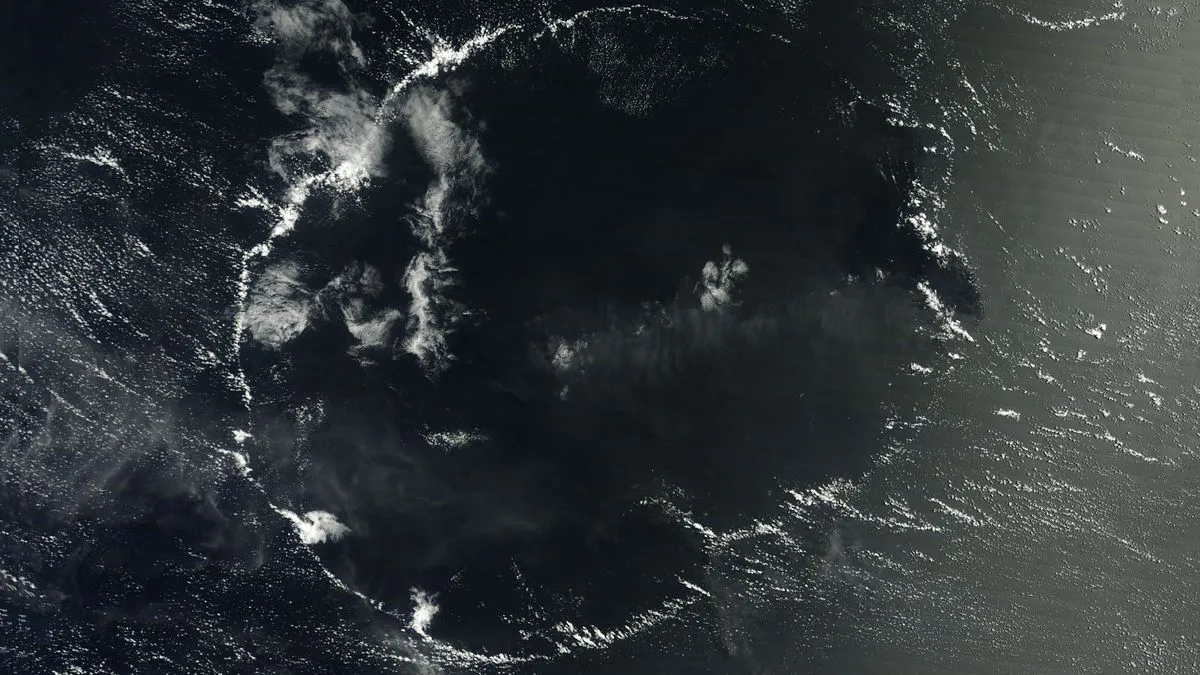
A stunning satellite image has captured the formation of a giant, nearly perfect cloud circle located in the heart of the Pacific Ocean, a phenomenon that has intrigued meteorologists and enthusiasts alike for over a decade. While such cloud formations are not entirely uncommon, their presence in such an isolated area is exceedingly rare, according to experts in the field.
The impressive cloud structure, measuring approximately 280 miles (or 450 kilometers) in diameter, was detected several thousand kilometers southwest of the Hawaiian Islands. This observation was made possible by the Moderate Resolution Imaging Spectroradiometer (MODIS) aboard NASA's Terra satellite, as reported by NASA's Earth Observatory.
This fluffy ring of cumulus clouds has formed into what is known as a Rayleigh-Benard convection cell. This meteorological phenomenon occurs due to the dynamics of warm and cool air interacting with different temperatures, a process referred to as convection. Meteorologists categorize cloud cells into two types: closed cells and open cells. Closed cells appear when cold air sinks around the borders of the cells, leading to cloud formation at their centers. Conversely, open cells form when cold air descends at the center, causing clouds to develop around the periphery.
The cloud ring captured in this remarkable satellite image is a classic example of a closed cell. Typically, cloud cells exhibit a hexagonal shape and tend to form in clusters with similar types, creating distinct patterns across the sky. Open-cell clouds, in contrast, often manifest as wispy, honeycomb-like structures. However, this particular cloud cell is unique because it stands alone without any neighboring cells.
The genesis of this solitary cloud ring was likely triggered by a parcel of warm air located over a small island or a patch of water that was intensively heated by the sun. As this warm air became buoyant, it began to rise, facilitating the development of cumulus clouds and possibly resulting in light rainfall. The rain would cool the surrounding air, leading to a downdraft that spread the cooler air away from the original cloud location. According to representatives from the Earth Observatory, when this rain-cooled air met the warmer air at the edge of the cell, it likely caused the warm air to ascend, resulting in the formation of the distinctive ring of cumulus clouds.
This intriguing cloud cell is situated just south of the Intertropical Convergence Zone (ITCZ), which is a low-pressure area near the equator where trade winds converge, often leading to frequent thunderstorms and heavy rainfall. The proximity to the ITCZ may have also influenced the development of this unique cloud structure, as noted by the Earth Observatory.
In addition to the cloud ring, the satellite image displays a shimmering ocean surface to the east of the cloud formation, exhibiting a metallic sheen. This phenomenon, known as sunglint, occurs when sunlight reflects off the ocean and directly back to satellite sensors in space, transforming vast patches of the sea into glistening silver mirrors.
This remarkable satellite observation not only showcases the beauty of natural phenomena but also highlights the complex interactions that occur in our atmosphere, emphasizing the importance of continued research and exploration into our planet's weather systems.